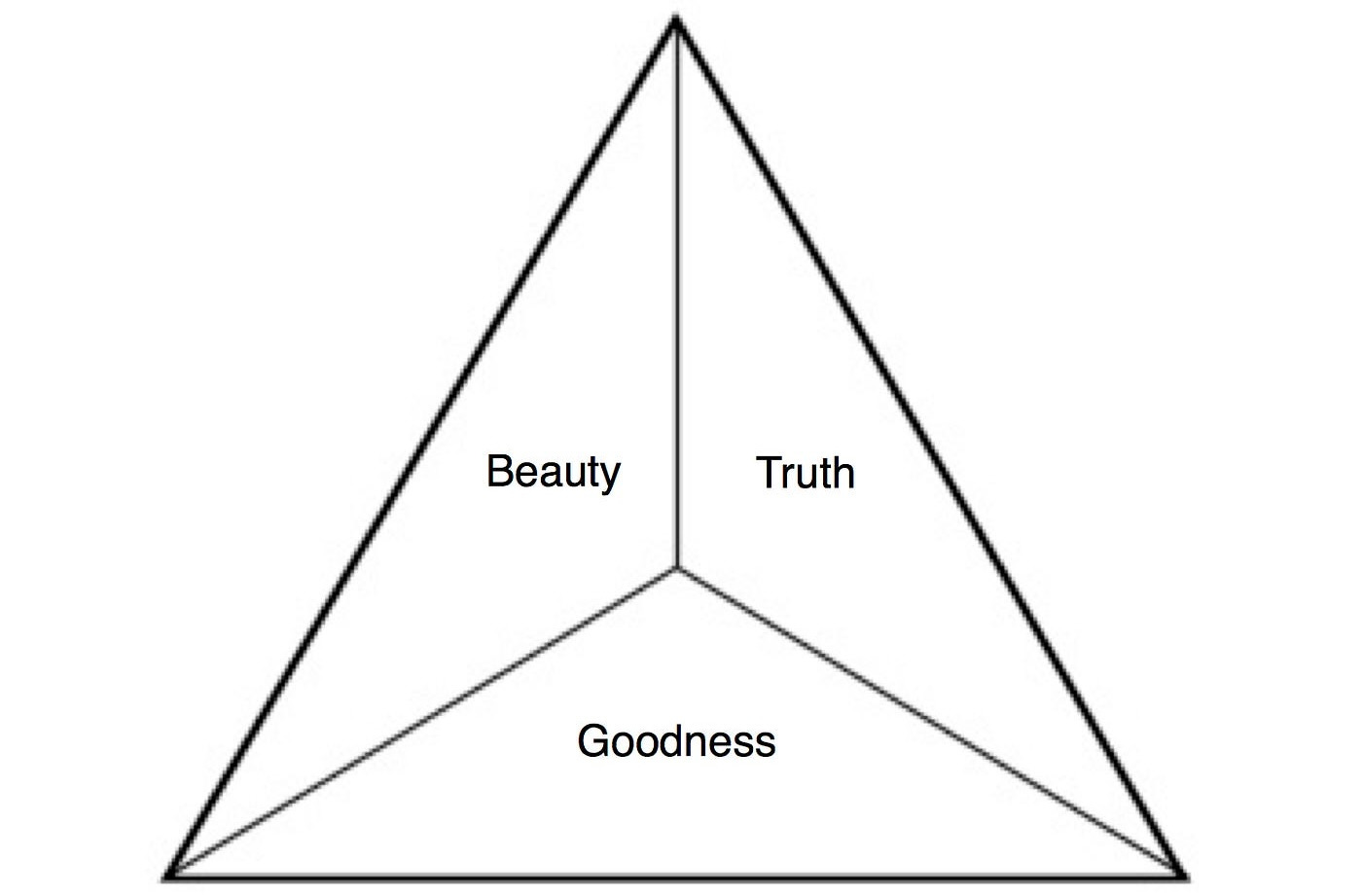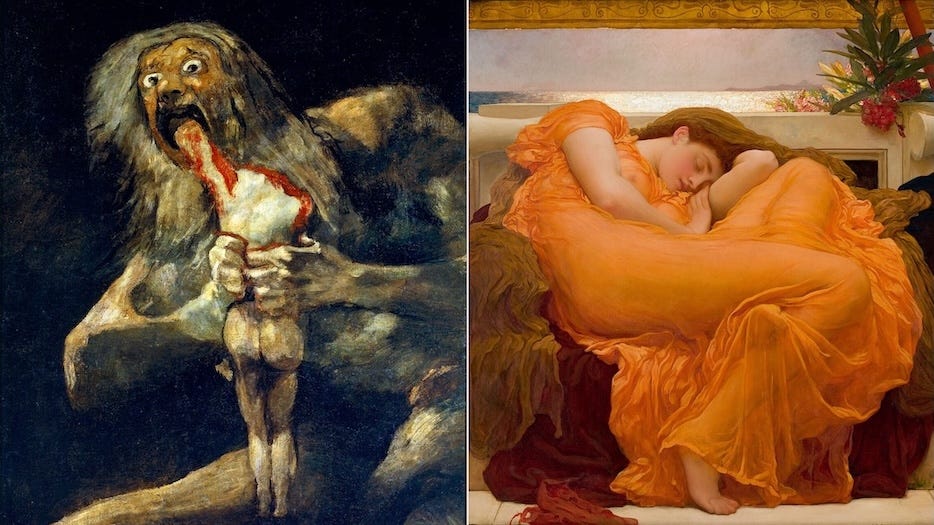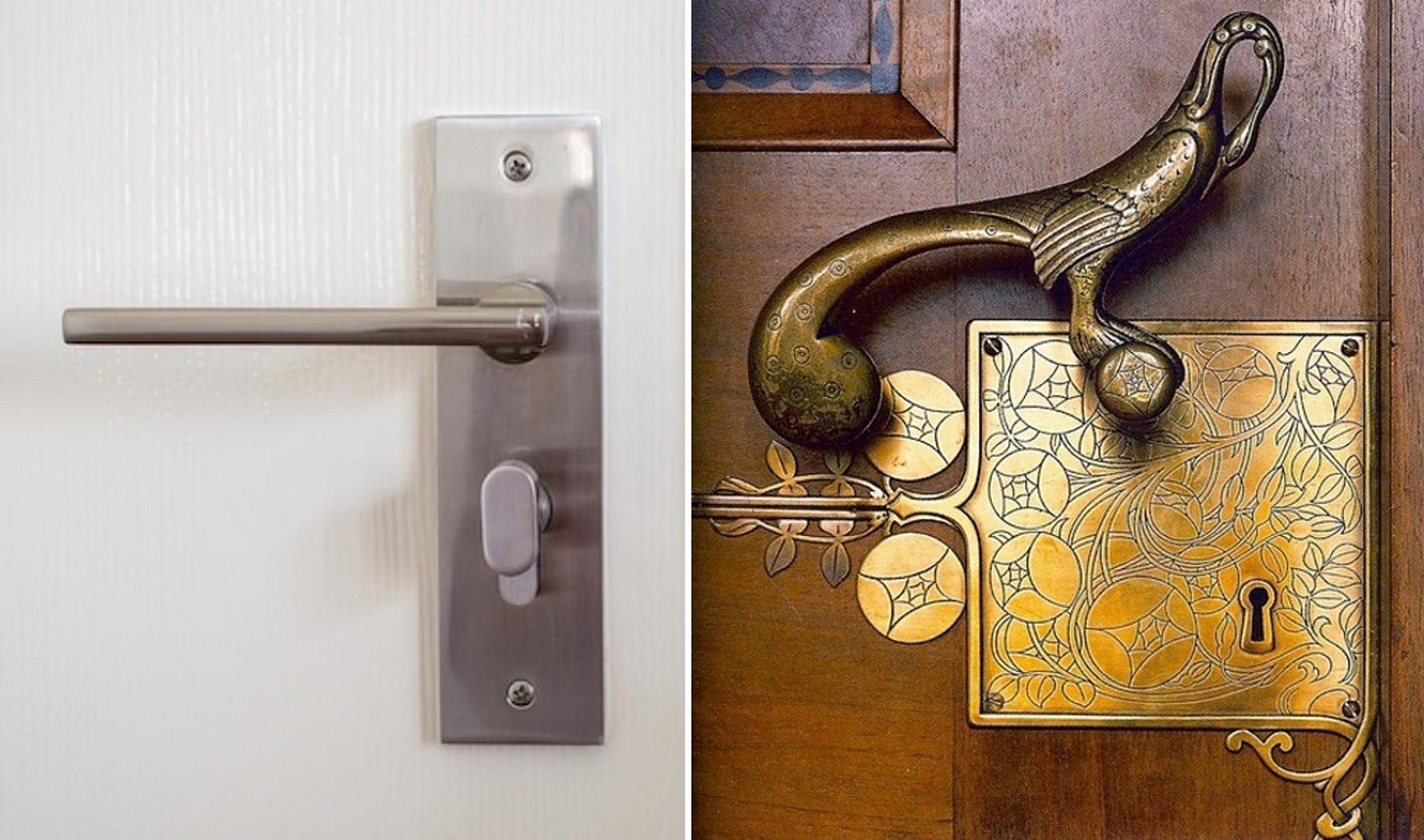Why Does Beauty Matter?
And is it really subjective?
Thomas Aquinas defined beauty as “that which, upon being seen, pleases.”
800 years later, neuroscience agreed:
Studies reveal that the brain processes beauty in the same region that processes both pleasure and disgust — so you experience the Sistine Chapel with the same part of your brain that activates with a bite of a delicious meal.
Beauty, however, is far more than a delicious meal. It’s the essential element that keeps culture alive.
But what actually is beauty, and why does it matter? Let’s begin by looking back to the 5th century BC…
Update: we’re starting a book club!
Since starting this publication 18 months ago, we’ve written about many classic works of literature, from Dante to Milton to Tolkien.
But reading the great books is more rewarding together. We’ve decided to start an online book club to study the great texts of the Western canon, slowly, from Homer to Hemingway.
We’ll read one new book every month, split into two bi-weekly discussions: an introduction to the text, and then a deeper reflection on it.
All our paid members can attend the live sessions on Substack, or watch the recordings later if you can’t make it.
All inner circle / founding members (our 2nd membership tier) can contribute to the discussion directly on Zoom — click the button below to join the inner circle, and you’ll be given a Zoom link.
What Is Beauty?
Plato and Aristotle identified three properties, truth, goodness, and beauty, which have the unique ability to take you to the brink of the human experience. They are the points at which our experience, which is limited by time, space, and our fallible minds, touches the eternal — something that exceeds our ability to understand.
In other words, these qualities are what endow our lives with spiritual significance. They took on the name “transcendentals,” from Latin transcendere, “to exceed,” or literally “to rise beyond.”
This link between beauty and spirituality is neatly summed up in the words of Catholic priest Thomas Dubay:
“The acute experience of great beauty readily evokes a nameless yearning for something more than earth can offer.”
In Plato’s understanding, beauty is more than an intellectual recognition. It’s a holistic experience of wonder, awe, and even humility.
What sets beauty apart from the other transcendentals is its ability to slip under your intellectual radar. You don’t have to analyze the meter of Beethoven’s Cavatina before it brings tears to your eyes. A sunset’s glow or a lovely face makes you catch your breath instantly, not after a long examination. Beauty is hard to define precisely because it bypasses your analytical shields and grasps directly at your heart.
Isn’t Beauty Subjective?
Take a look at these two paintings: “Saturn Devouring His Son” by Francisco Goya, and “Flaming June” by Frederic Leighton.
Would you say one is beautiful and one is not? If so, can you define the difference?
Beauty is notoriously difficult to pin down empirically. Not only that, but its manifestations vary across cultures, so it looks different depending on time and place.
This leads to the relativist assumption that the experience of beauty is completely subjective. In other words, you’re led to believe something is beautiful only because you’ve been taught or conditioned to deem it so.
However popular that proposition is, it doesn’t explain the fact that people respond to beauty with predictable neurological changes. When exposed to beautiful images and architecture, your body releases oxytocin and endorphins. Your heart rate lowers, as does your blood pressure.
In other words, the physiological response is anything but subjective. There’s something about actual beauty that impacts people regardless of what they’ve been conditioned to like. Treasured works of architecture around the world all rely on mathematical patterns to create visual harmony. That harmony makes us feel safe, calms our nervous system, registers as aesthetic beauty, and even reminds us of the longing for spiritual peace.
But that doesn’t mean beauty is restricted to one style of architecture. Cultures of the past brought forth a dizzying array of breathtaking buildings, incorporating mathematical concepts from geometry to fractals.
Islamic design incorporates complex geometric patterns, Egyptian pyramids use precise angles and proportions including the golden ratio, and Hindu temples use fractals as the basis for its high spires:
Each of these epic designs tells a unique story. The fractals of Virupaksha Temple, for instance, convey eternally-rising spiritual consciousness. You might assume that the design of the pyramids is simplistic, but their eternal magnetism comes from the complex angles that make their simple shapes so harmonious — making you feel the weight of eons as you gaze at them.
So, what’s the lesson in all this architecture?
Beauty differs in its manifestations, but it follows predictable patterns.
What Is the Role of Beauty in Culture?
We already touched on the way beauty functions as the meeting place between the limitations of our lives and the invitation to the infinite. In fact, you could say this is the primary role beauty serves in every culture.
In this sense, beauty is the link between culture and spirituality. It lifts our eyes above our immediate concerns, putting us in touch with the greater purpose of our lives.
How can culture survive without a sense of transcendence? It’s no accident that the great cultures that shaped history — Greek, Roman, Egyptian, and more — left behind vivid mythologies as well as great art. Their spiritual reality was immediate to their daily life.
What’s more, beauty is an essential mode of passing on culture.
What inspires you more, a list of rules, or a beautiful ritual? It's probably the latter, which is why cultures enshrine their most sacred truths in beautiful stories, songs, objects, buildings, and even garments. One of beauty’s crucial roles is to keep its people united in their collective identity and safeguard truth for future generations.
That’s why beauty is such an effective way to measure the health of a culture. And it also begs the important question:
What Happens When We Lose Touch With It?
The Renaissance saw an outpouring of beauty that flowed from princely palaces down to homely churches. Ornamentation bloomed on vases, swords, doorknobs, and picture frames. It was a culture in touch with its spiritual life.
We can’t quite say the same for today’s world. Modern production is optimized for efficiency, not illumination. Cobblestone streets give way to interstates. Once-enchanting cities fill with strip malls, and items are produced to meet the demands of fast-shifting fashions. Without the unifying force of beauty, culture begins to unravel.
Is beauty all that’s required to repair the cracks, though? Perhaps not, but it feels certain that cultural revival will never occur without it.
Beauty Is the Bridge
Yes, beauty is “subjective,” in the sense that it speaks to us as subjects. It resonates with us in an individual, personal way.
But the power of beauty is that it’s rooted in an objective ideal, and is therefore a bridge between individual experience and objective reality. That’s what gives it the power to connect our lives with the eternal and imbue culture with meaning.
Orienting our cultural efforts toward something beyond ourselves keeps us striving, healthy, and united. It’s when our confidence in our culture’s deeper meaning falls apart that ugliness creeps back into our public — and private — spaces.
So, how can you make the world more beautiful?
It all begins at home, with how you live: the way you dress, the books you read, the music you listen to. The way you decorate your home, and whether you prefer to spend your spare time looking down at a screen or up into the outdoor sky. All of these are opportunities to add order, harmony, and beauty to your life.
More than that, they’re opportunities to tap into a deeper, more spiritual existence — one that restores both your life and the culture around you to harmony and meaning.
Please consider supporting our mission by becoming a paid subscriber — you’ll get tons of members-only content for just a few dollars per month:
Full-length articles every Wednesday and Saturday
The entire archive of articles and members-only podcasts
Membership to our bi-weekly book club (and chat room)








I have always felt that todays cities and the houses they are building are suppressing the spirits and always felt admirations for real and beautiful works of architecture. This article resonated deeply with those observations. My heart bleeds as it is one more proof for me that right now our culture (writing from Germany) died and thats also why so many people are depressed.
I will always chase truth, goodness and beauty, also in this dark times.
Very inspiring! Life feels so much better when we surround ourselves with beauty.